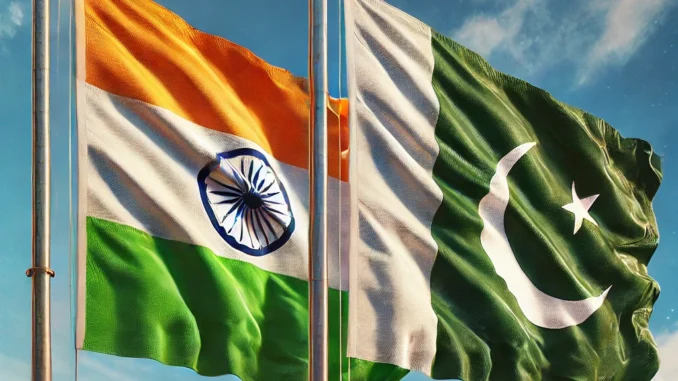
India and Pakistan both declared victory on Sunday after agreeing to a cease-fire brokered by American mediators, following four days of the most intense military exchanges between the nuclear-armed rivals in over five decades. Sparked by a deadly terrorist attack on the Indian side of Kashmir last month, the conflict escalated with alarming speed — drawing international concern about the risks of an all-out war.

The Spark: A Terror Attack and Retaliation
The violence erupted after an April 22 terrorist bombing killed dozens in Indian-administered Kashmir. India quickly attributed the attack to groups operating out of Pakistan, accusing Islamabad of continuing to harbor militants with deep links to cross-border violence. Pakistan denied any involvement.
By the early hours of Wednesday, India launched airstrikes deep inside Pakistani territory — further than any in recent history. Though Indian officials claimed to have hit militant infrastructure, the operation appeared to trigger a rapid and dangerous spiral. Pakistan responded with aerial strikes of its own, and both air forces engaged in dogfights, resulting in the loss of at least two Indian fighter jets.
Casualty reports varied: India claimed to have killed 100 militants, while Pakistan reported around 30 deaths from the initial strikes.
The Escalation: Precision Hits and Strategic Warnings
As diplomatic efforts to de-escalate began behind the scenes, both militaries widened the scope of their operations. On Thursday, India reported thwarting a coordinated Pakistani attack on multiple border towns. In a bold counter-move, Indian warplanes targeted Pakistani air defense installations in Lahore — a calculated strike analysts say could have signaled a broader operational intent.
“This was more than retaliation,” noted Kim Heriot-Darragh of the Australia India Institute. “It was a strategic message.”
The air battle expanded with mass drone incursions, missile launches, and complex aerial maneuvers. Pakistan’s official silence on some of these operations added confusion, though it is believed the country was either probing Indian air defenses or attempting an ineffective first wave of retaliation.
Meanwhile, heavy cross-border shelling wreaked havoc on civilian populations in Kashmir, forcing mass evacuations and raising the humanitarian toll.
The Most Dangerous Phase: Targeting Strategic Sites
The most concerning phase came late Friday into Saturday. Pakistan launched a large-scale drone and missile barrage on Indian military bases. India reported significant damage and confirmed the deaths of five security personnel. Retaliatory Indian strikes hit Pakistani airfields and military sites — including areas near strategic command hubs.
Pakistan acknowledged, for the first time, 11 military casualties and nearly 80 wounded — a sign of how serious the confrontation had become.
By then, the United States had stepped in, warning that the threshold for nuclear escalation was coming dangerously close. A cease-fire was announced late Saturday, with President Trump commending both sides for halting their offensives. The truce appeared to hold as of Sunday, offering a fragile but critical pause in hostilities.
What Lies Ahead: A Changed Battlefield
The four-day conflict marks a new chapter in India-Pakistan military dynamics. With both nations deploying long-range precision weaponry, drones, and loitering munitions, the nature of warfare in South Asia may be shifting toward high-tech, low-contact engagements — but with no less danger of escalation.
Rather than reducing casualties, these technologies escalated the pace of retaliation and brought both sides perilously close to the nuclear brink. As both nations assess the damage — physical and political — there is widespread concern that the next conflict could unfold even faster, and potentially with fewer guardrails.
For now, peace holds. But the region remains on edge.
Leave a Reply